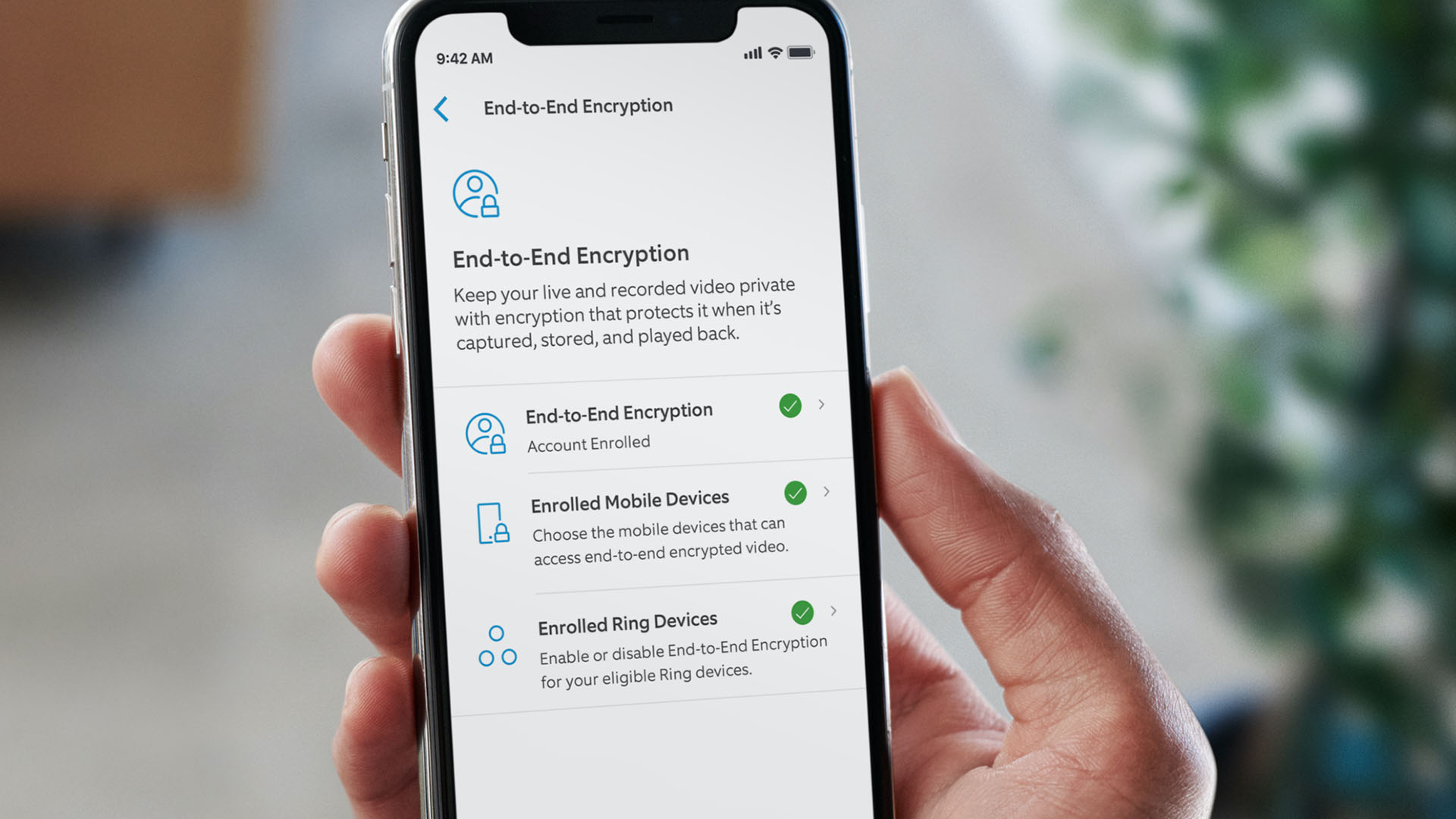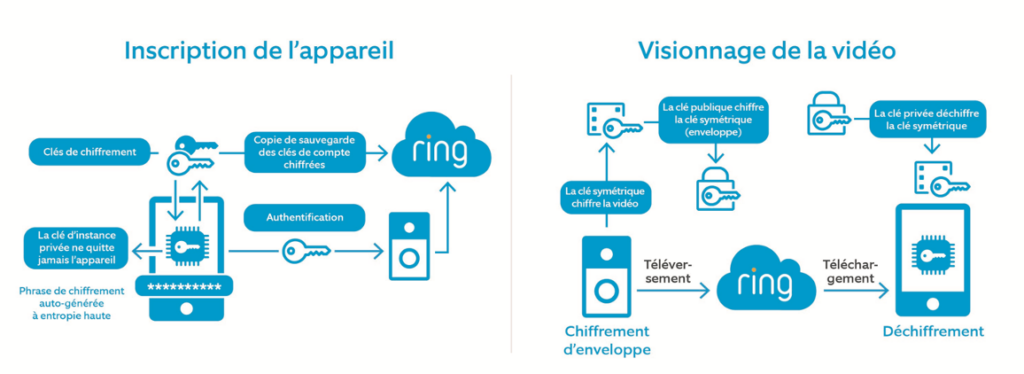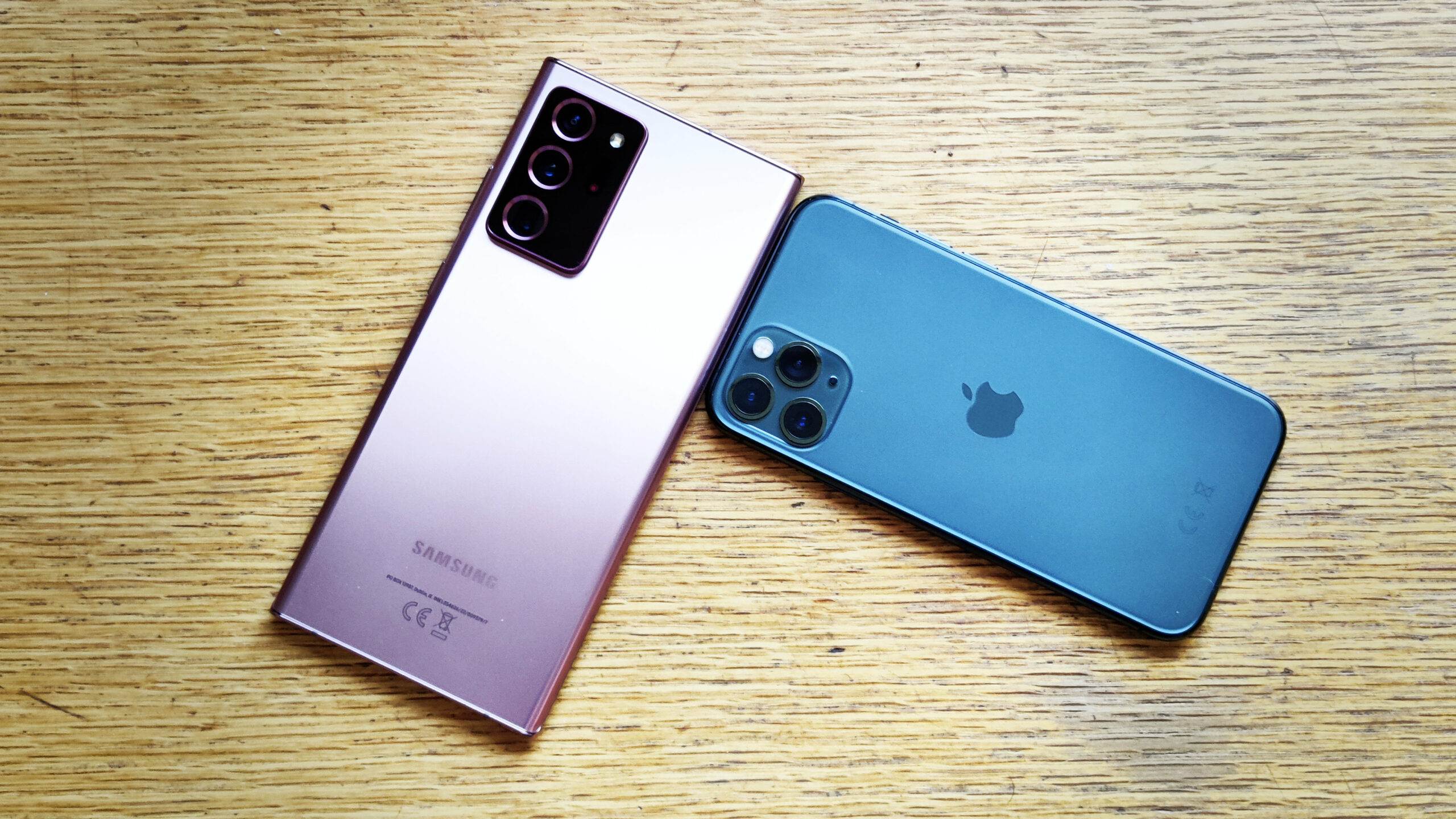
The Amazon subsidiary dedicated to connected objects widely deploys end-to-end encryption. The option is not active by default. Additionally, additional steps have been taken to improve two-step verification and bot shelving.
Ring camera owners now have access to a new security mode for the video stream, with end-to-end encryption. The American company specializing in connected objects, which in 2018 became an Amazon subsidiary following its takeover, announced on July 13 the exit of the option, which had been mentioned since the beginning of the year, via a technical overview.
This mathematical-based method makes content unreadable for people who are not allowed to see it. This technique applies to text as well as to files (images, sounds, videos) and streams transmitted in real time or not. Thus, the confidentiality and integrity of transmissions are guaranteed. In short, it is a very secure communication channel.
When properly used, end-to-end encryption even keeps out the service that offers it (in this case, Ring) or the Internet service provider. But above all, its role is to counter possible interceptions of video streams by malicious third parties. Indeed, without the decryption key, it is extremely difficult to be able to view the content in question in clear.

Decisive security, if you activate it
The availability of end-to-end encryption is great news, but it came out with a few nuances: First, not all devices sold by Ring are eligible (the list can be found here). Then, the functionality, although generalized, will not be available everywhere in the world (France is entitled to it). Finally, the option is not active by default: you have to configure it yourself, assuming that you are aware of its existence.
In addition to this additional protection, which was in fact announced as early as September 2020, Ring also provides another type of encryption, when videos travel between its servers and customers (this is encryption in transit) and when they are stored (i.e. is encryption at rest). These two types of encryption are performed by default, but here Ring has access to the decryption key.
In the case of end-to-end encryption, the key is present only on the user’s mobile device, so that only one can watch the videos. While there are cases in which end-to-end encryption can be circumvented, either by technical means or by legislative provisions, they do not affect Ring’s average customer base on a day-to-day basis.
In addition to this additional security lock, Ring is announcing the expansion of its support for two-factor authentication. This protection, provided since February 2020, aims to request a temporary code, generated or received on a smartphone that has been previously configured, in addition to the password. After sending by SMS and email, the code can be obtained via a dedicated authentication application.
Finally, the latest announcement that further raises Ring’s security level, the use of a captcha in its application to protect customer account information and help prevent automated connection attempts by third parties. The captcha consists of asking the user to perform certain actions, so as to block any bots.



